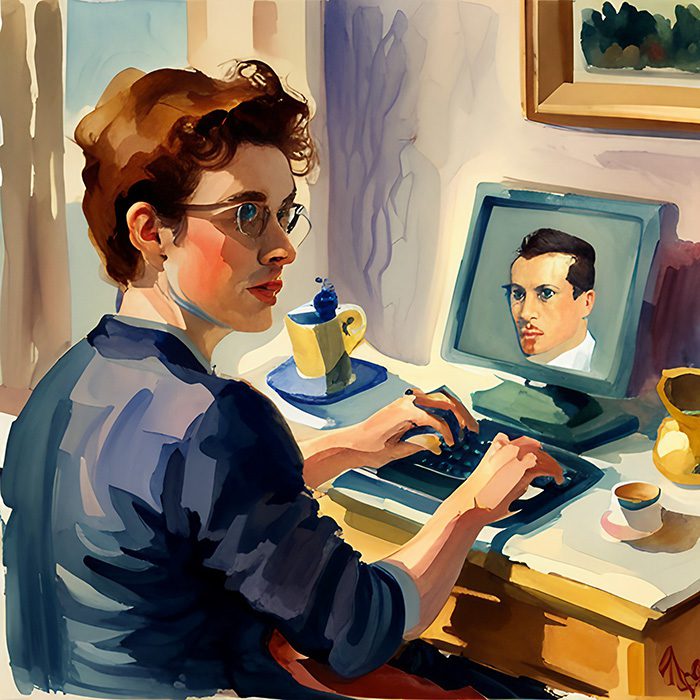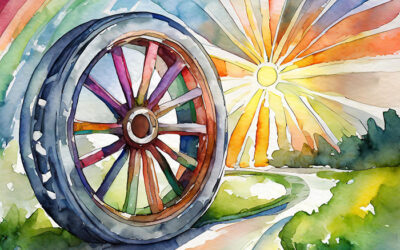In a landmark ruling that has profound implications for art and technology, a US Federal Judge has decreed that AI-generated artwork cannot be copyrighted. This decision not only signals a significant shift in the legal landscape but also provides an intriguing new dimension to consider in your marketing and branding strategy.
The Ruling and Its Implications
The case in question revolved around Stephen Thaler’s attempt to have his AI-created art copyrighted. The verdict? “Human authorship is a bedrock requirement,” as stated by the judge. Essentially, this means that any piece of artwork created solely by artificial intelligence is ineligible for copyright protection.
While this may seem like a setback for creators who utilize AI, it’s crucial to delve into what this could mean for businesses and their marketing strategies.
A New Era in Marketing
With the clear ruling that AI-generated art can’t be copyrighted, there’s a newfound freedom for marketers and graphic designers. The use of AI in marketing isn’t a ‘new’ trend. It’s been used for everything from data analysis to content creation.
AI can create unique and engaging visuals for branding, advertising campaigns, social media posts, and more. These visuals can be generated quickly, tailored to specific audiences, and modified at scale. This efficiency can significantly enhance productivity and allow your team to focus on other essential aspects of your marketing strategy.
The Power of Personalization
One of the most significant benefits of using AI in marketing is the ability to personalize content. With AI, you can create customized visuals that resonate with your target audience, improve engagement, and drive conversions. The potential for creating highly personalized, copyright-free visuals is enormous. This is a massive advancement from preset templates often used in the past.
Navigating the Future with AI
While the ruling that AI-generated art can’t be copyrighted may seem daunting, it presents an opportunity for businesses to leverage AI technology in their marketing and branding strategies. The use of AI can lead to increased efficiency, personalized experiences, and, ultimately, business growth.
However, as with any technology, it’s essential to use AI responsibly. While AI-generated art can’t be copyrighted, it’s crucial to respect the work of human artists and not use AI to replicate or infringe upon their creations.
The Double-Edged Sword of AI Art in Marketing
On the surface, this ruling seems like a boon for marketers. It paves the way for businesses to use AI-generated visuals freely, without the usual constraints and worries about copyright issues. However, just as every coin has two sides, this newfound freedom comes with its own set of challenges – the most significant being the inability to claim ownership over AI-generated creations.
Consider this scenario: Your team invests considerable resources into creating an AI-generated visual that perfectly aligns with your brand’s identity. Then, to your dismay, you notice a competitor using the same image (that you created!) for their campaign. Suddenly, your distinct brand identity is threatened, and the potential for customer confusion increases.
Overcoming the Challenge: Strategies for Your Business
While the threat of non-ownership is real, it doesn’t spell doom for your marketing strategy. In fact, it presents an opportunity to innovate and adapt. Here are a few strategies that businesses can employ:
Blend Human Creativity with AI: Use AI as a tool to create the foundational elements of your visuals, and then let your human designers enhance these with unique features that reflect your brand. This not only maintains some level of control over your visuals but also adds a personal touch that resonates with your target audience.
Leverage Proprietary AI Models: If your resources allow, consider developing proprietary AI models exclusive to your business. This guarantees that the AI-generated visuals you use are unique to your brand.
Diversify Your Content: Consider using a mix of AI-generated content and content created by human design teams. This approach provides the best of both worlds — the speed and efficiency of AI with the originality and uniqueness of human creativity.
Evolve Your Branding: Use the ruling as an opportunity to reassess and refine your brand identity. Create a distinctive visual language that can be applied to AI-generated content, making it uniquely identifiable as your own.
Implement Watermarks: Although AI-generated art can’t be copyrighted, you can add watermarks or other identifiable markers to your visuals. This can serve as an identifier of the origin of the visual, discouraging others from using it without attribution.
Establish Partnerships With Real Humans: Partnering with graphic designers, content creators and artists can provide an opportunity to create exclusive content. This can add value to your brand and provide a competitive advantage.
Use AI Responsibly: The lack of copyright restrictions might seem like a free pass, but it’s essential to respect others’ work and uphold the value of originality.
The recent court ruling indeed presents a new landscape for businesses. But remember, the key to navigating this change successfully lies in striking the right balance between leveraging the benefits of AI and maintaining your brand’s distinctiveness and integrity.
It’s never been a more exciting time to harness the power of AI in your marketing strategy. By approaching this strategically, your business can drive growth and success while protecting your brand’s uniqueness.
Embrace the change, adapt your strategy, and watch your business thrive in this new era of AI art.





0 Comments